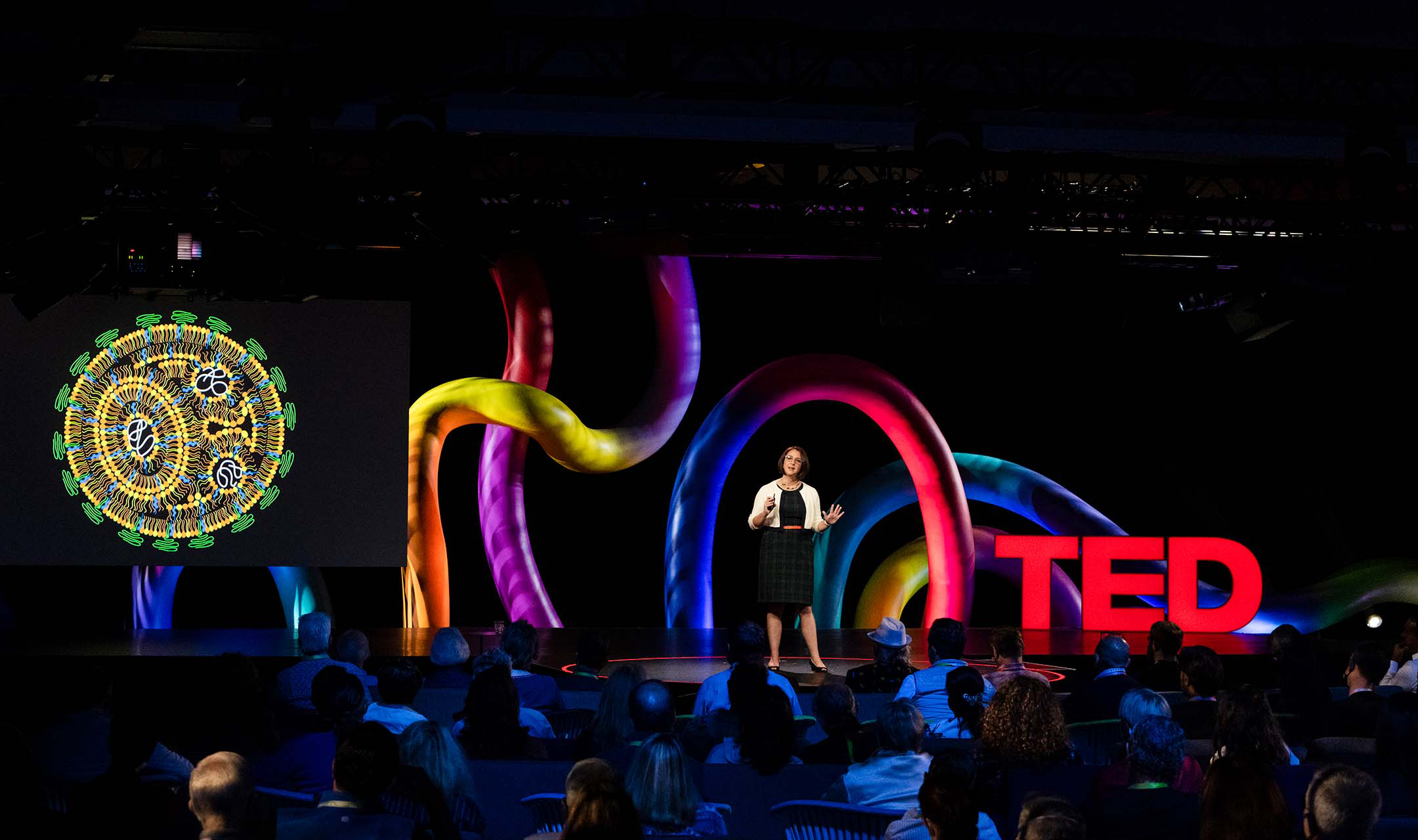Whitehead featured on NPR’s TED Radio Hour
Following her recent TED Talk, Katie Whitehead sits down with NPR’s TED Radio Hour Host, Manoush Zomorodi, to discuss lipid nanoparticles and how RNA drugs are revolutionizing modern medicine.
When it comes to drug delivery methods, Katie Whitehead is at the forefront of innovation.
Following her recent talk at the annual TED conference in Monterrey, CA, Whitehead, associate professor of chemical engineering, sat down with NPR’s TED Radio Hour host, Manoush Zomorodi, to further explain lipid nanoparticles and how RNA drugs are revolutionizing modern medicine.
“A drug delivery scientist wants to make sure that when we take any kind of medication, it goes to the right place inside of our bodies, and it does that without causing toxicity or negative effects in places that it shouldn’t,” said Whitehead. “So, one of the things we work on in my lab is to enable the use of brand-new drug technologies.”
Whitehead’s award-winning research has discovered ways to genetically engineer human cells in breast milk for infant disease therapy, uncovered a path for the oral delivery of insulin, and pioneered RNA drug delivery techniques that will enable a new wave of treatments for nearly every known disease.
During her TED Talk in August, she explained how mRNA technology seemingly burst onto the scene as scientists raced to develop a vaccine to slow the spread of COVID-19. While many believe the technology was created and implemented overnight, Whitehead shared that researchers have been working for years to get to the point where mRNA delivery methods could be used quickly in the case of an emergency.
So how does mRNA work?
“The moment that messenger RNA is fully inside the cell, our cells know exactly what to do with it,” said Whitehead. “They know that they have to look at that code, and they have to make the protein that’s associated with it.”
Once the protein is created, the cells alert our immune systems, asking them to look at the protein and decide whether it is problematic.
“When our immune cells come over, and they see this part of the spike protein belonging to the coronavirus, they know it doesn’t belong there, so they begin to make antibodies. In this case, they are making antibodies that will bind very specifically and accurately to the coronavirus if it were to enter our system. When those antibodies bind to an invading coronavirus, it basically gets walled off from its surroundings. It cannot interact with our lung cells or other cells that it wants to infect, and our body knows that when something is covered in antibodies, we have to get rid of it, and so it gets flushed from our system.”
While mRNA drugs have been in the works for many years, the technology’s biggest hurdle has been directing them to the right places within the human body.

Source: TED
“When mRNA is administered, it’s injected into our muscles or our bloodstream, but we actually need it to go inside of our cells,” said Whitehead, associate professor of chemical engineering and biomedical engineering. “Unfortunately, mRNA is fragile, and our bodies will destroy it before it gets very far."
“You can think of mRNA like a glass vase that you would like to send in the mail. Without a box and bubble wrap, it will break long before it is delivered; and without an address on the box, your postal delivery service will have no idea where to take it. So, if we are going to use mRNA as a therapeutic, it needs our help. It needs protection, and it needs to be told where to go.”
The solution was found within tiny balls of fat, known as lipid nanoparticles. Resembling the membranes surrounding cells, lipid nanoparticles are able to “trick” cells into letting them inside, where mRNA can be released and go to work combating the virus.
Once it’s released, mRNA acts as an instruction manual, telling cells to make a foreign protein, such as the coronavirus spike protein. When immune cells detect foreign proteins, they work to protect the body from them. The immune cells then “remember” the foreign protein so they can defend against it if it ever returns.
“Here’s the best part—for mRNA therapeutics, these vaccines are only the beginning,” said Whitehead. “It turns out that mRNA has the potential to treat many diseases.”
Here’s the best part—for mRNA therapeutics, these vaccines are only the beginning. It turns out that mRNA has the potential to treat many diseases.
Katie Whitehead, Associate Professor, Chemical Engineering
Whitehead explained that in the future, there will likely be treatments for cystic fibrosis, muscular dystrophy, and sickle cell anemia, a cure for cancer and vaccines that will protect against some of the world’s most deadly and feared pathogens like Malaria, Ebola, and HIV.
“COVID-19 catalyzed the most rapid vaccine development in history and brought to life a niche, previously unapproved form of technology. Now we are collecting long-term safety and efficacy data from hundreds of millions of people. With this data, interest for the technology, funding for the technology and trust in the technology will continue to grow.”
“We have lost too many people to the coronavirus. It’s been awful, but the technology and its development, will down the line, save even more lives.”
You can listen to Whitehead’s appearance on TED Radio Hour by visiting NPR’s website or by using the player below.
